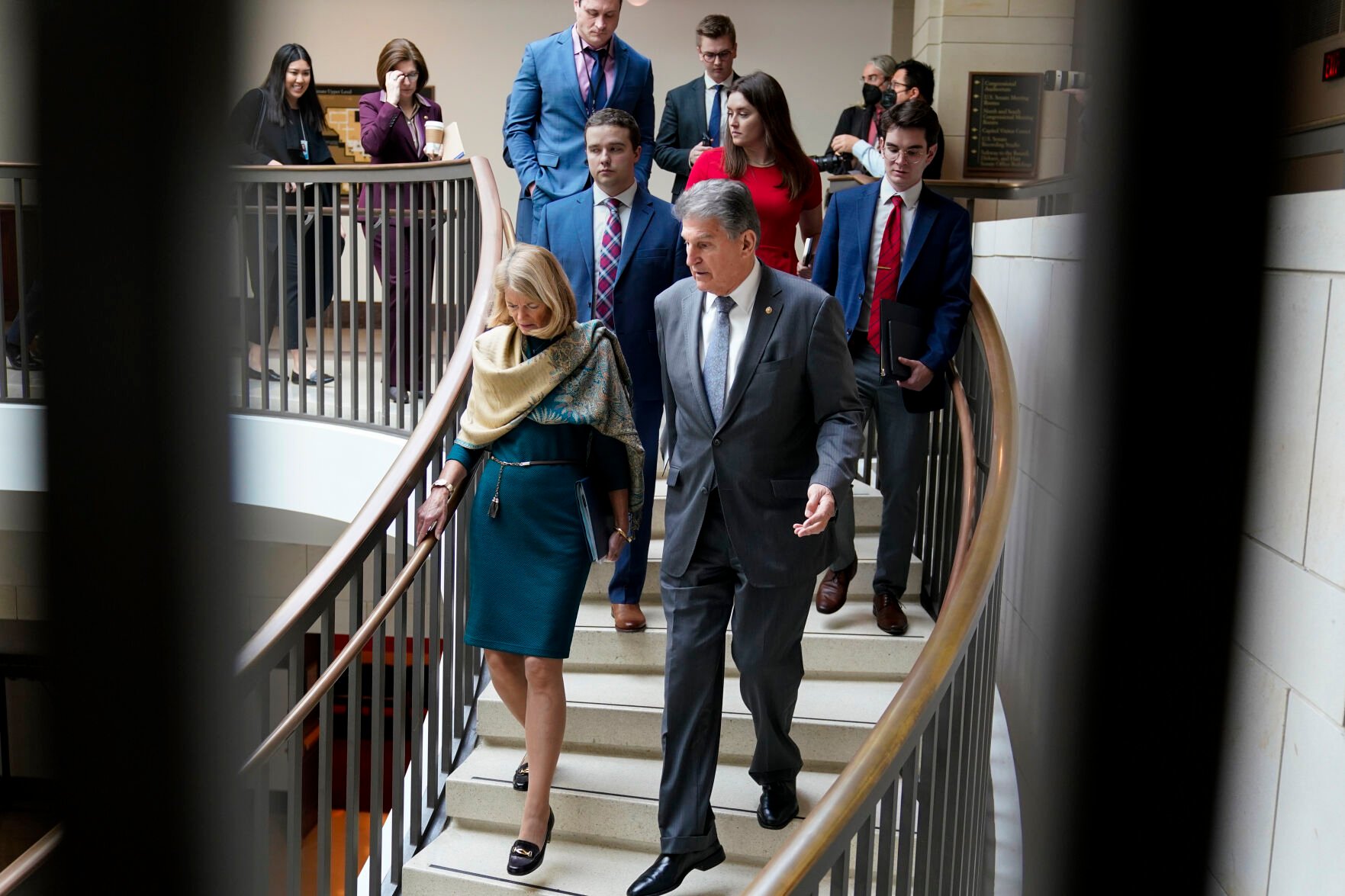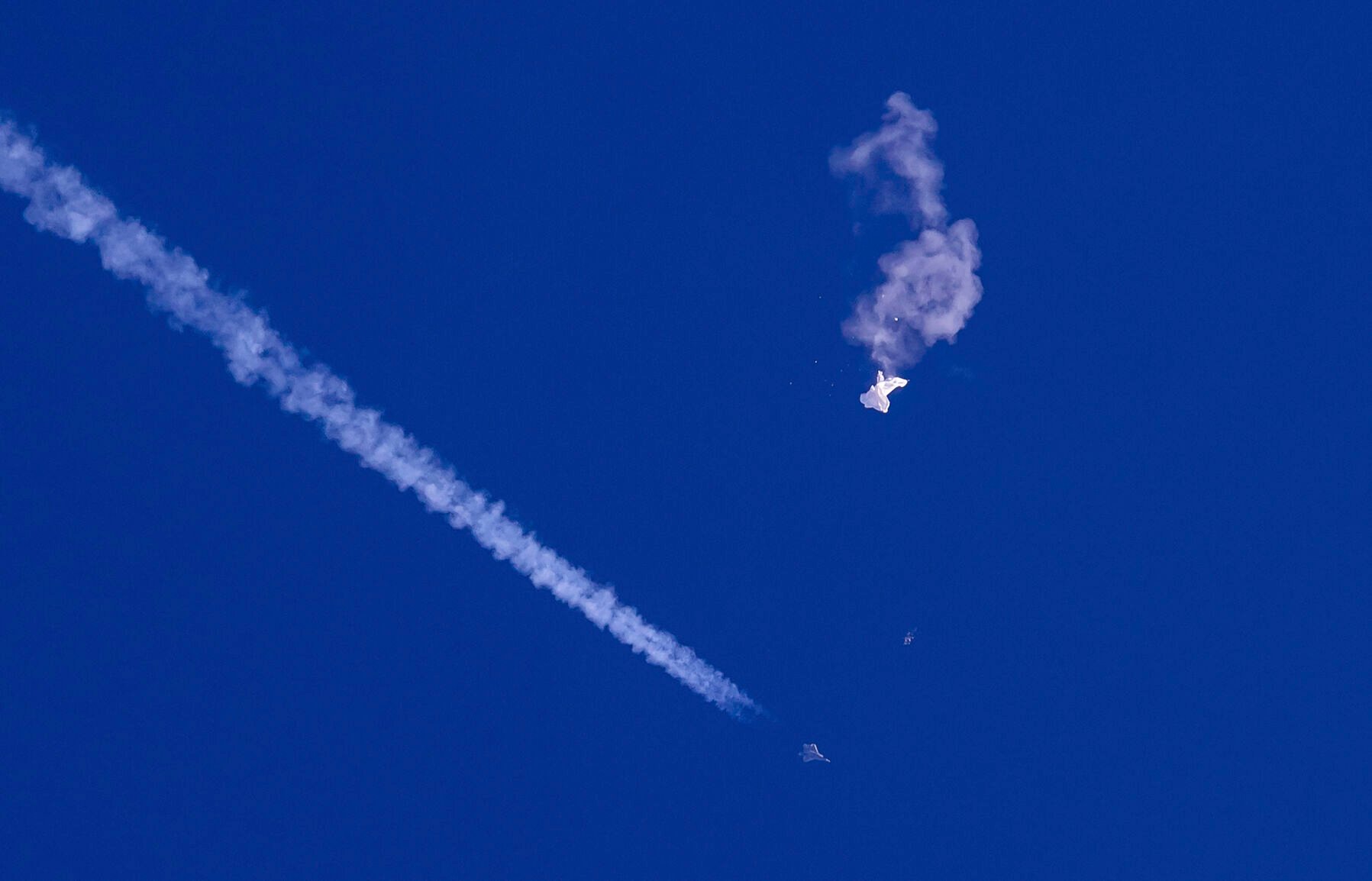US says China balloon could collect intelligence signals
WASHINGTON — The Chinese balloon shot down by the U.S. was equipped to detect and collect intelligence signals as part of a huge, military-linked aerial surveillance program that targeted more than 40 countries, the Biden administration declared Thursday, citing imagery from American U-2 spy planes.
A fleet of balloons operates under the direction of the People’s Liberation Army and is used specifically for spying, outfitted with high-tech equipment designed to gather sensitive information from targets across the globe, the U.S. said. Similar balloons have sailed over five continents, the administration said.
A statement from a senior State Department official offered the most detail to date linking China’s military to the balloon that was shot down by the U.S. last weekend over the Atlantic Ocean. The public details outlining the program’s scope and capabilities were meant to refute China’s persistent denials that the balloon was used for spying, including a claim Thursday that U.S. accusations about the balloon amount to “information warfare.”

J. Scott Applewhite, Associated Press
Sen. Lisa Murkowski, R-Alaska, left, and Sen. Joe Manchin, D-W.Va., head to a secure underground facility Thursday as lawmakers and intelligence advisers arrive for a closed briefing on the Chinese surveillance balloon that flew over the United States, at the Capitol in Washington.
On Capitol Hill, the House voted unanimously to condemn China for a “brazen violation” of U.S. sovereignty and efforts to “deceive the international community through false claims about its intelligence collection campaigns.” Republicans criticized President Joe Biden for not acting sooner to down the balloon, but both parties’ lawmakers came together on the vote, 419-0.
In Beijing, before the U.S. offered its new information, Chinese Foreign Ministry spokesperson Mao Ning repeated her nation’s insistence that the large unmanned balloon was a civilian meteorological airship that blew off course and the U.S. had “overreacted” by shooting it down.
“It is irresponsible,” Mao said. The latest accusations, she said, “may be part of the U.S. side’s information warfare against China.”
Underscoring the tensions, China’s defense minister refused to take a phone call from Defense Secretary Lloyd Austin to discuss the balloon issue on Saturday, the Pentagon said. Secretary of State Antony Blinken canceled a planned weekend trip to Beijing.
The U.S. flatly contradicted China’s version of events, saying imagery of the balloon collected by American U-2 spy planes as it crossed the country showed it was “capable of conducting signals intelligence collection” with multiple antennas and other equipment designed to upload sensitive information and solar panels to power them.
Jedidiah Royal, the U.S. assistant defense secretary for the Indo-Pacific, told a Senate Appropriations subcommittee that the military has “some very good guesses” about what intelligence China was seeking. More information was expected to be provided in a classified setting.
Senior FBI officials who briefed reporters on the condition of anonymity said a few pieces of the balloon arrived at the FBI’s Quantico, Virginia, lab for investigation.
According to two U.S. officials, the balloon recovery efforts were temporarily suspended Thursday due to high seas. They said some balloon debris was intact on the ocean floor and divers recovered potentially high-value equipment over the past day and a half.
The State Department official, providing details to reporters by email on condition of anonymity, said an analysis of the balloon debris was “inconsistent” with China’s explanation that it was a weather balloon. The U.S. is reaching out to other countries that also were targeted, the official said, to discuss the scope of the Chinese surveillance program.

Chad Fish via AP
In this photo provided by Chad Fish, the remnants of a large balloon drift Feb. 4 above the Atlantic Ocean, just off the coast of South Carolina, with a fighter jet and its contrail seen below it.
The official said the U.S. has confidence that the manufacturer of the balloon shot down on Saturday has “a direct relationship with China’s military and is an approved vendor of the” army. The official cited information from an official PLA procurement portal.
State Department spokesman Ned Price would not identify the other countries the U.S. says also were targeted. Nor would he reveal how the U.S. knows there have been Chinese incursions over those countries’ territory, saying to do so could compromise intelligence sources and methods.
The release of new information appeared part of a coordinated administration response, with multiple officials appearing before congressional committees to face questions about the balloon.
Testifying before the Senate Foreign Relations Committee, Deputy Secretary of State Wendy Sherman said officials had taken “all necessary steps to protect sensitive information” and had been able to study and scrutinize the balloon and its equipment.
At a separate Senate subcommittee hearing, lawmakers repeatedly pressed administration officials, including Pentagon military leaders, about why the balloon was not shot down over sparsely populated areas of Alaska. And they questioned whether allowing the balloon to transit such a large area set a precedent for future spying efforts by China and others.
“It defies belief that there was not a single opportunity to safely shoot this spy balloon prior to the coast of South Carolina,” said Sen. Susan Collins, R-Maine. “By the administration’s logic we would allow the Chinese to fly surveillance balloons over the Pentagon or other sensitive sites and populated areas.”
